Targets
Historically, visual activism, in its need to convey a message quickly and clearly to a broad spectrum of individuals (not unlike commercial advertising), often depends on an oppositional structure, pitting the enemy or the dominant power structure against its victims. Identifying common enemies can incite the public and propel the movement by soliciting an indispensible emotional response and a united front. In looking at the Occupy movement more specifically as it has unfolded over the last month, we can isolate a few common targets that stand out among the seemingly endless number of images available.
Target: 1%
The stark imbalance of 99 to 1 captures the most clear visual and textual message coming out of Occupy. Whether in the form of percentage points or ratio, the figures encapsulate the key issue of inequity and class divide.
The idea of 99% frames the protests around identity (which group do I belong to?) and identity politics, like many other social movements of the last century.
A symbol of unity: 99% has been articulated in a range of visual forms, from traditional signage, to “Scarlet A” type badges, to the embodied and larger-than- life bodily articulation shown above. (Photo: Kevin Driscoll)
Target: America
Although Occupy has gone global, the original target was not only Wall Street as a financial center, but also what it stands for more broadly—the ties between American capitalism, corporate power and our democratic government.
OccupyLA plays Pin the Tail on the Donkey with corporate citizenship and campaign finance. (Photo: Kevin Driscoll)
The interpretation of the America as “target” does not necessarily indicate an unpatriotic sentiment.
Here the flag is being reworked in a kind of détournement, as a symbol and site of commentary about insidious ties and complicit relationships between corporate America, the government, and mainstream media that need to be challenged and broken.
The faces of political and financial leaders are both caricatured as jack-o-lanterns at OccupyLA. (Photo: Kevin Driscoll)
Target: The Banking System
Last year in this blog, Lana described groups, inspired by the the financial crisis and “Too Big to Fail” bail-out, that “infuse even traditional uses for money with new significance, undermining the taken-for-granted authority of financial institutions and turning personal banking into a form of civic communication”. Similar sentiments and strategies have become a key part of the visual rhetoric of the Occupy movement.
In many cases, protesters have rallied against banking establishments (Chase, Bank of America) and staged sit-ins.
Many occupiers have used currency to literally silence themselves by placing bills over their mouths.
Occupy George puts Occupy-inspired messaging into circulation. As the website describes, “Money talks, but not loud enough for the 99%. By circulating dollar bills with fact-based infographics, Occupy George informs the public of America’s daunting economic disparity one bill at a time. Because money knowledge is power.”
Next: Tactics




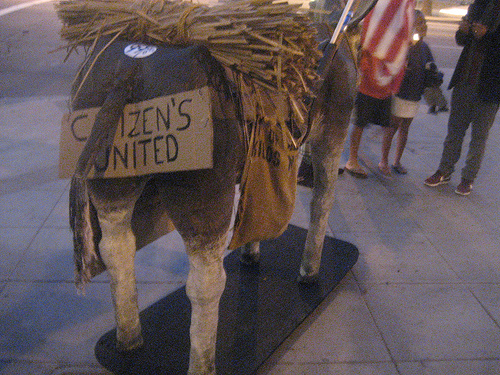
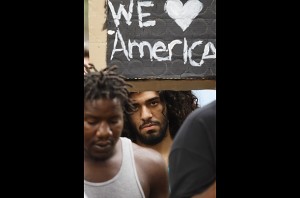
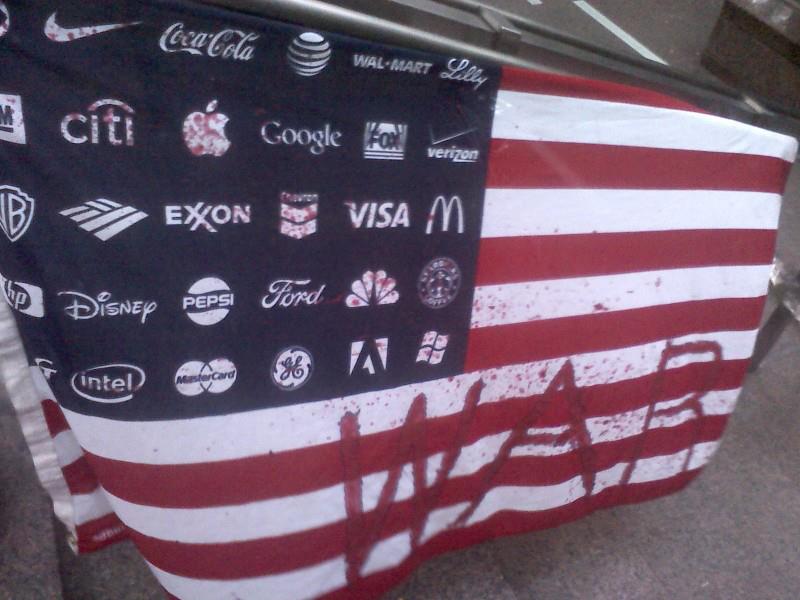

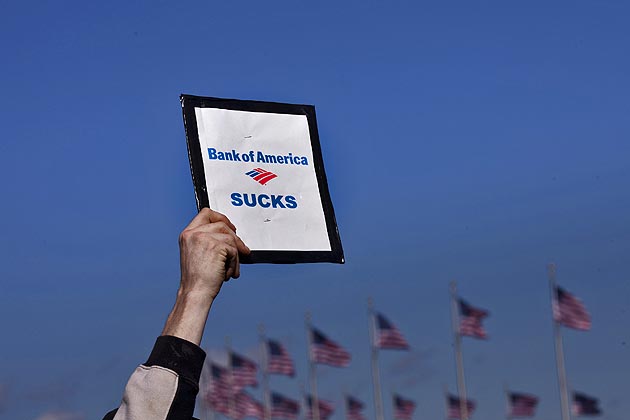


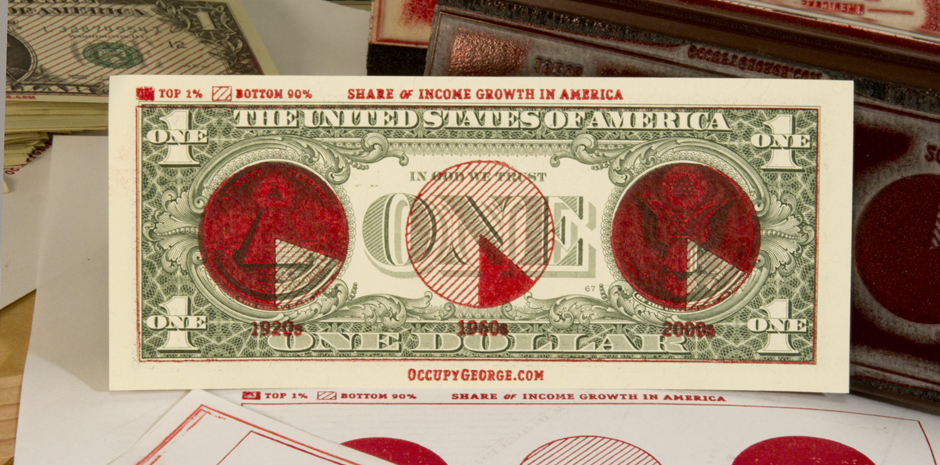

[…] Visual Culture of the Occupation. […]